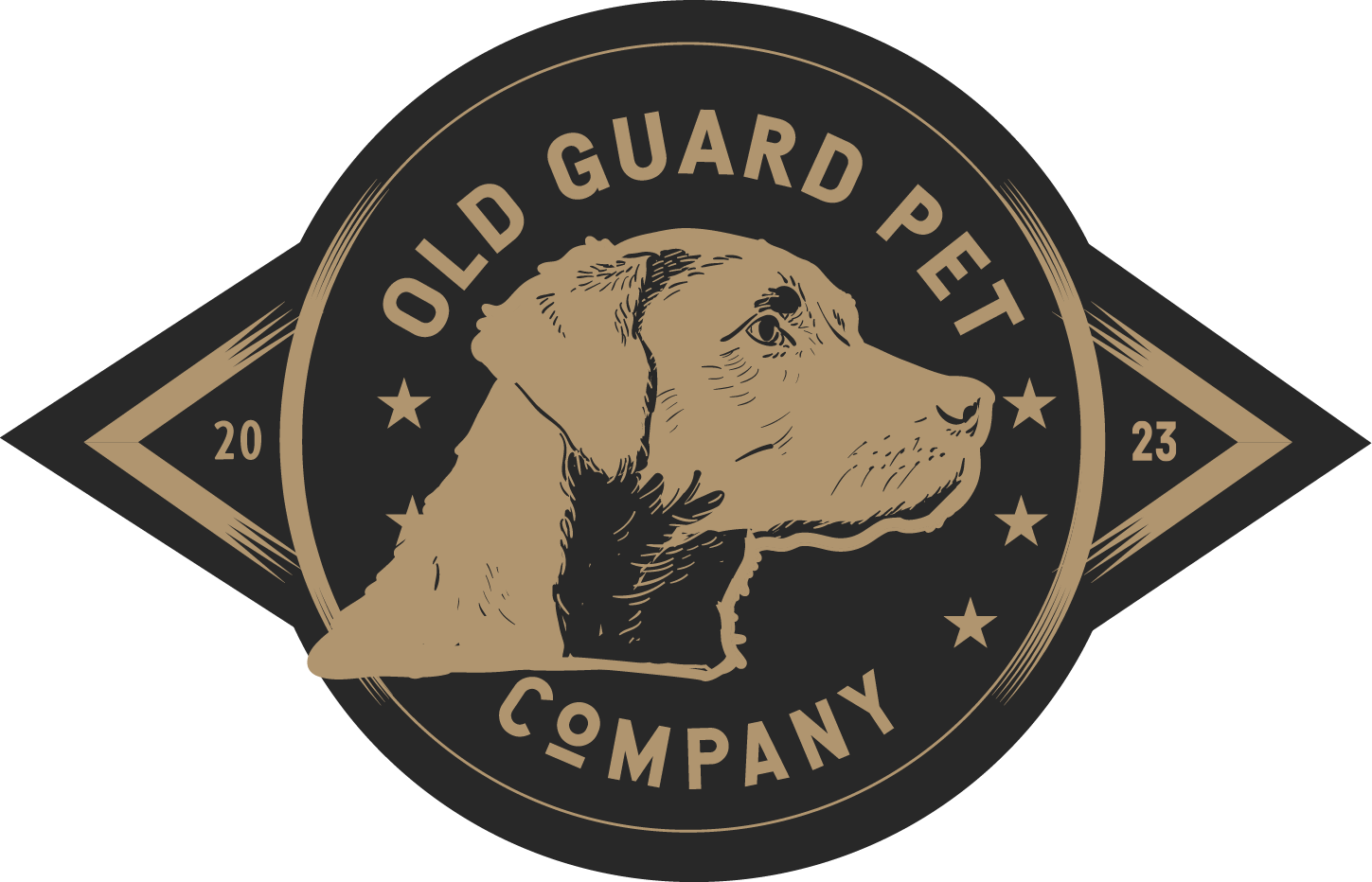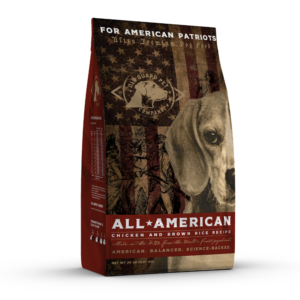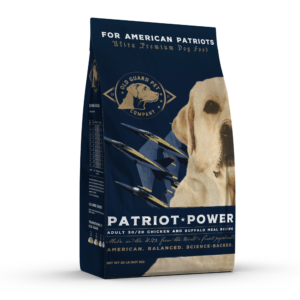The pet food landscape can be confusing and overwhelming. Choosing the right product can be difficult. However, how can you be confident that the premium food of your choice delivers the health benefits or experience you expect? There are certain strategies companies take to push their products in the premium space. Premium foods are mostly defined by price point, ingredients, and product experience.
In this article, you will learn what to look for in premium recipes and the potential benefits for your pet.
- Nutritional Requirements
- Types of Ingredients and Quality
- Ensuring the Ideal Balance
- Results
1. Nutritional Requirements – What Makes a Premium Dog Food?
Most dog foods will be designed to meet AAFCO (American Association of Feed Control Officials) guidelines. These are nutritional standards created by a group of experts that define the minimum and sometimes maximum levels of essential nutrients for dogs. If the product is formulated to meet these standards there will be a disclaimer on the bag outlining the nutritional adequacy for a particular group of dogs (adult, puppy, all ages etc). This statement declares that the product is designed to be complete and balanced for your pet, and as such, your dog is getting the nutrients that they need.
For Premium recipes, these formulations will typically meet the AAFCO standards and potentially provide higher nutrient levels (where there are proven benefits and still within safe ranges). An example of this is higher Vitamin E levels. Vitamin E is critical for many functions in your pet’s body, it is an expensive ingredient to add to recipes but, higher levels can have a variety of potential health benefits including supporting your dog’s immune system. Many Premium products will invest in the recipe to add higher concentrations of key nutrients that may have a benefit on your dog’s health, but again, are still within safe maximum and minimum ranges (more isn’t always better).
Premium recipes will often invest in more costly recipes by adding more of certain essential nutrients or adding non-essential nutrients with potential or proven benefits for your pet.
Premium recipes may also include nutrients that are not required by AAFCO to be defined as complete and balanced. These nutrients are deemed “non-essential” but, have been shown to support or have the potential to benefit certain biological functions and ultimately your dog’s health. An example of this is omega-3 fatty acids. There is no requirement for omega-3 fatty acids as a group (though there are requirements for individual omega-3 fatty acids like docosahexaenoic acid or DHA). But, including a guaranteed level of omega-3 fatty acids can often support certain health benefits like skin and coat health, inflammation etc.
Overall, your dog will do well on a complete and balanced diet. However, more premium recipes will often invest in more costly recipes by adding more of certain essential nutrients or adding non-essential nutrients with potential or proven benefits for your pet.
2. Types of Ingredients and Quality
Ingredients are important for the nutrients that they contain, their ability to be digested and the nutrients absorbed for use by the various systems in the dog’s body. Many companies offering premium foods will take varying approaches to the ingredients that they select. These approaches will differ for a variety of reasons and are typically driven by positioning of the diet in the pet food category. For instance, does the brand:
- Focus on following human trends in nutrition?
- Focus on being “sustainable”?
- Designed for dogs with certain health needs?
If a diet is designed to follow a certain human trend or to be intuitively “healthier” many companies will add ingredients like “fruit and vegetable flavors or garnishes” as an example. These ingredients can be costly but, the purpose is often more about marketing (adding images of fruit and vegetables to the pack and making a claim about their presence in the recipe) versus real health benefits for the dog.
Alternatively, companies providing premium foods may invest in ingredients that provide key health benefits. These ingredients are typically leveraged when trying to deliver certain nutrients to the pet (like egg for its ideal balance of amino acids) or the ingredient itself (like probiotics) that has the potential to deliver a benefit directly. Pet foods designed for dogs with certain sensitivities usually leverage unique protein or more costly carbohydrate sources to avoid the key ingredients that cause allergic responses.
So, types of ingredients will usually differ in premium foods since the diet is trying to offer certain additional benefits.
Quality is also important. When considering premium foods these will often include more refined or fresh animal protein sources versus less premium diets that might use more vegetable protein sources or more meals/by-products. These aren’t necessarily bad for your pet, and in fact have received some undo criticism; however, the digestibility or nutrient density/availability may be lower versus the more premium ingredients.
3. Ensuring the Ideal Balance
Balance is key when it comes to nutrition. Even the best ingredient can be detrimental at the wrong inclusion level. In addition, its important to consider how ingredients and nutrients interact with one another since some can have positive interactions and others can compete causing negative effects on nutrient absorption and availability. It’s important to note that most pet foods are “complete and balanced” as they meet AAFCO guidelines. However, more premium foods will look for balance among additional ingredients or nutrients beyond what is required for the dog.
For example, digestive health, different dog sizes and breeds tend to have more sensitive gastrointestinal systems. Therefore its important to tailor recipes for breed size with large breeds tending to have more sensitive digestive tracts. A recipe may be balanced in the approach to digestive health and have ingredients that have a benefit on the whole digestive tract by including blends of carbohydrate, fibers with differing fermentation, prebiotics and probiotics (and perhaps now even postbiotics) will help ensure the entire digestive tract from the mouth to colon has something that is supporting its optimal function.
Another example of how more premium recipes will balance ingredients is around carbohydrates for energy. Some carbohydrates have higher glycemic index’s, this means they break down into glucose for energy more quickly versus a carbohydrate that has a lower glycemic index. Balancing carbohydrates with different glycemic indexes can ensure there is a more continuous energy source available between meals as opposed to short term peaks. This can be especially important to consider when you have a working dog or one that is overweight.
Often times pet owners will feel that they need to supplement their pets food. Perhaps there are times that warrant this; however, for the vast majority of dogs supplementation can be risky since this can impact that balanced. Add egg to your dog’s food or some cooked sweet potato? This sounds wonderful in practice; however, suddenly caloric intake can change, perhaps your pet eats less of the actual diet, and now they have to digest and metabolize higher levels of protein or carbohydrates leading to the potential for some imbalances or compensation.
4. Premium Dog Food Should Give You Results
The experience that a dog and their owner have with premium food should be noticeable. From the general product design (look of the food, bag/packaging design- is it resealable? etc.) and experience in the short and long-term health of your dog. Pet food is highly regulated by the government by what companies can and cannot say about their products. That is why many products make similar claims and have similar product benefits. The diet may be offering additional benefits that companies are prohibited from talking about. This is where the experience that you and your dog have with a food is important to pay attention to.
Each dog is different so, look for these early signs:
- Digestive health (grumbling, gas, appetite) after you finish transitioning to a new food.
- Is the dog’s stool firm and easy to pick up?
- Is your dog’s skin and coat oily, dry?
- Is your dog itching more or less?
- Look at their ears, eyes, teeth and breath. Do they look healthy?
- Longer term, if you’re feeding your dog correctly, you should notice that your dog is at an ideal weight and body composition (lean muscles), and they have the right level of energy, and can move well. Of course, for all of this to be possible the dog must eat the food.
Premium dog food recipes should be designed to support a range of health benefits as described above. Also, premium foods should leverage robust science (new and old) to ensure that the nutritional approach is valid and meaningful. Companies should also ensure the diets are meeting formulated levels of nutrients by testing recipes and conducting the appropriate feeding trials (specifically for digestibility).
Conclusion
Overall, many diets will adequately support your dog’s health. However, premium foods invest in the recipe to support health beyond complete and balanced. Namely, diets with science-backed ingredients and nutrients will likely have the greatest scientific evidence to support the benefit that they can provide to your dog.
Five Dog Food Nutrition Secrets From a PhD

With so much information floating around out there on dog nutrition, how can you be sure you have the facts? In this guide, Founder Maggie Gooding, PhD, in Animal Nutrition and Behavior, with over a decade experience in R&D working on some of the largest pet food brands share five nutrition secrets to help your dog live a longer healthier life.
Get the inside scoop on:
- Nutrients
- Energy Balance
- Weight Control
- Dog Eating Habits
- Fibers and Fillers
Download by filling the form out below:




